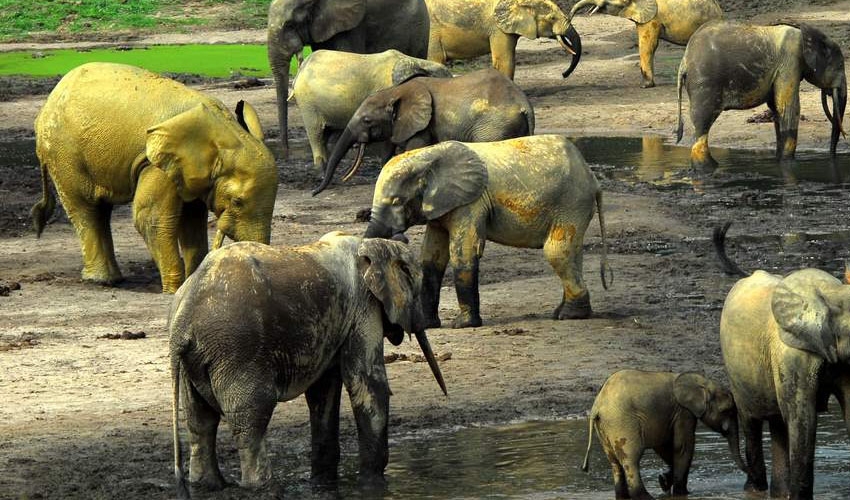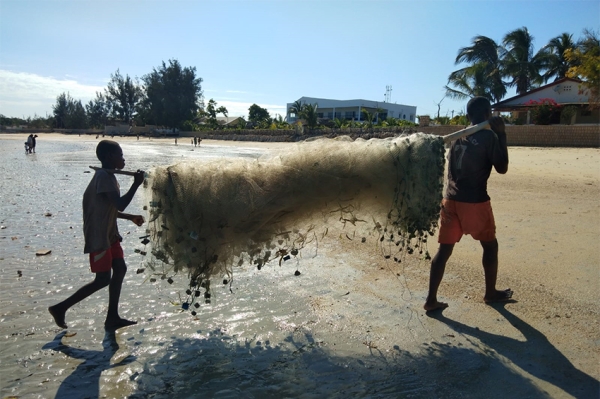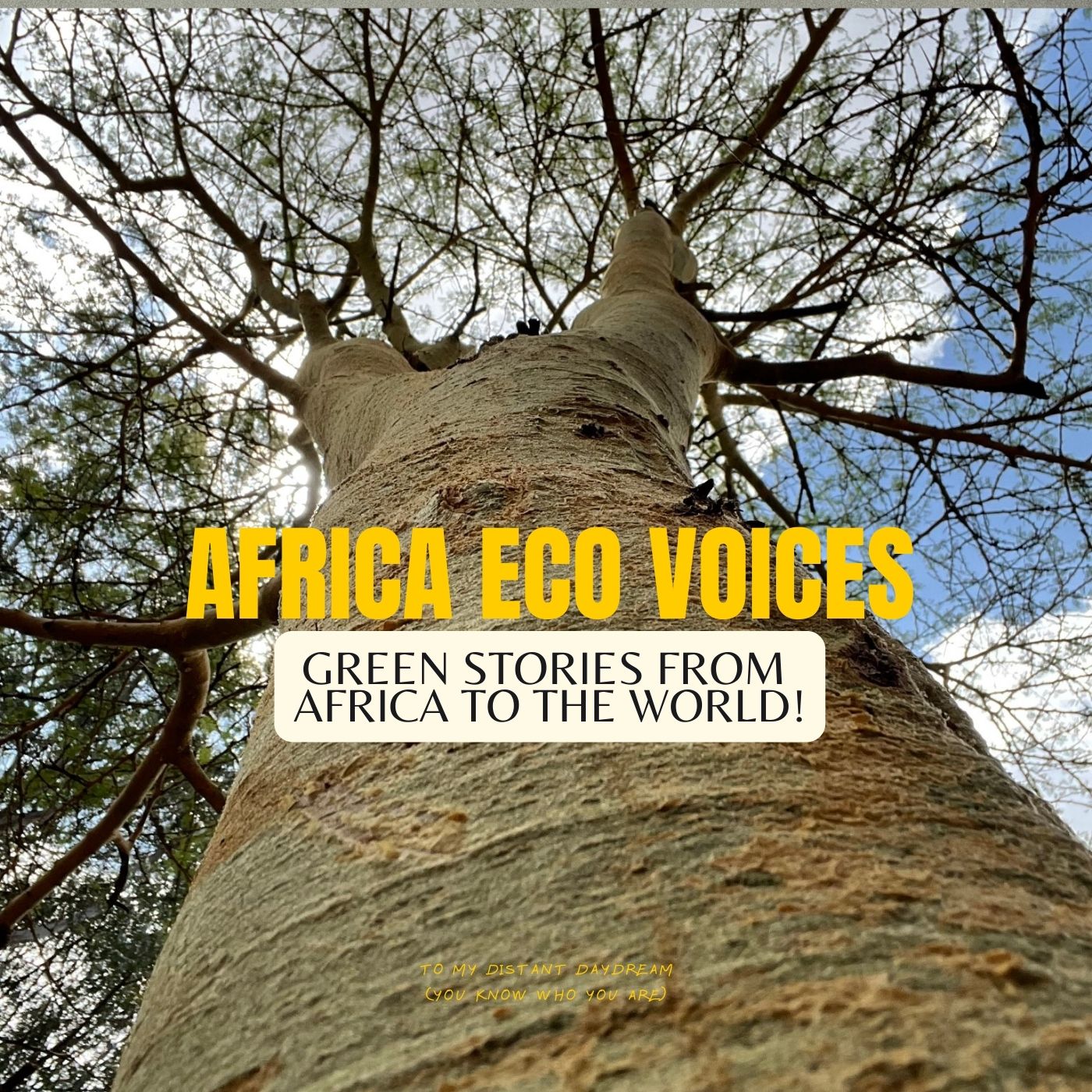Reef Restoration in Madagascar’s Southwest Region
The spectacle of Onilahy River as it pours into the Indian Ocean is one to behold. The river’s hiss and the ocean’s roar melt into a beautiful water symphony.
You can behold this spectacle from Sarodrano village in Madagascar’s Atsimo-Andrefana region. Beneath your feet are the smooth soft beaches that tourists love slapping the soles of their feet into.
The entire Sarodrano village constitutes a coastal spit. This means that it juts out for three kilometers into the ocean, forming a semi-island of sorts. On either side of the spit are mellow mangroves and coarse corals. Adding to Sarodrano’s allure is a stretch of dunes of very fine white sand. They make for spectacular scenery. Incidentally, some of the first humans to step onto Madagascar settled in this village.
In 2013, Cyclone Haruna smashed into Sarodrano’s lush beauty and wreaked havoc into the livelihoods of the village’s 50,000 people. While climate change doesn’t increases the cyclone frequency, it dials up cyclone intensity. Indeed, during their life cycle, some cyclones can generate 10 times as much energy as the Hiroshima atomic bomb. Yet Madagascar has to endure tropical storms of varying intensity every year.
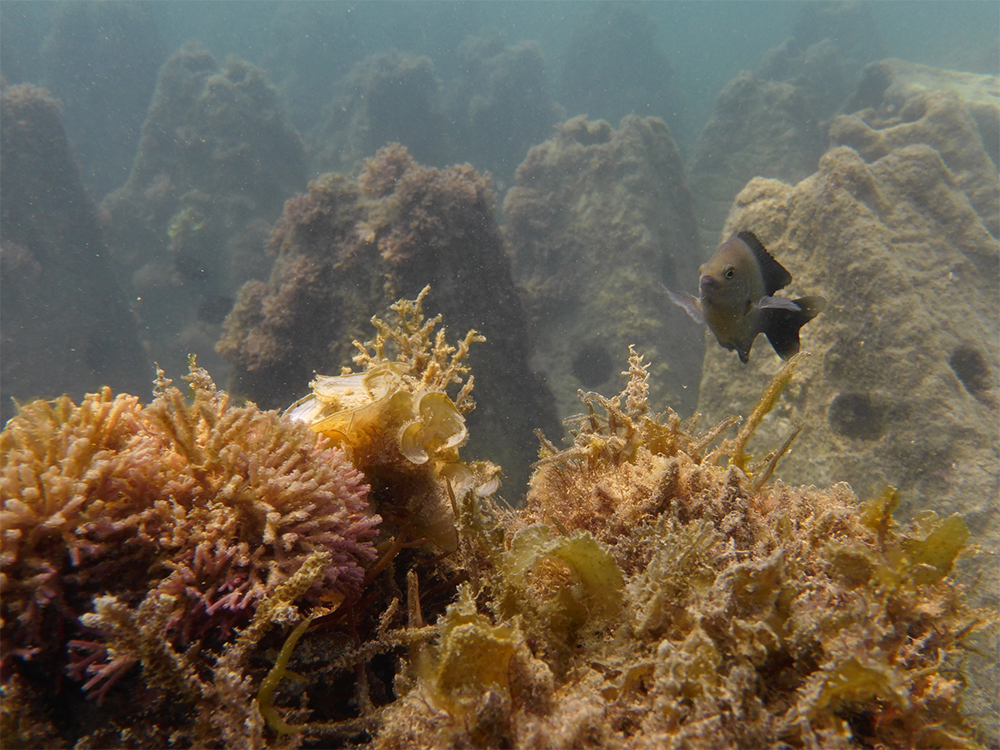
An artificial reef together with natural reef. Photo courtesy of Fishes Banking Enterprise ©
As if that’s not enough, much more recently, from the late 2010s, a lingering drought has shoved 8.8 million people across Madagascar into food insecurity. In October 2021, more than one million people in southern Madagascar were ravaged by hunger, in what the World Food Programme (WFP) said could become the first-ever climate change-induced famine. By November 2022, 2.22 million people in this region, which Sarodrano village is a part of, were already mired in emergency levels of food insecurity.
Evidently, climate change is at the heart of these severe challenges in Sarodrano, the wider Atsimo Andrefana region and across Madagascar. The United Nations Environment Programme (UNEP) reveals that ‘rising global temperatures cause sea levels to rise, increase the number of extreme weather events such as floods, droughts and storms, and increase the spread of tropical diseases.’
Apart from these usual suspects, climate change has also resulted in a more silent albeit similarly destructive consequence – Coral bleaching. According to the International Union for Conservation of Nature (IUCN), if temperatures continue to rise, bleaching events will increase in intensity and frequency. IUCN further reveals that coral reefs harbour the highest biodiversity of any ecosystem globally and directly support over 500 million people.
Among this people is ARMEL Patrice, a fisherman from Toliara town, Atsimo-Andrefana region’s capital. His livelihood depends on the octopuses and fish that he catches from the ocean. Patrice noticed that in the last several years, he would catch less and less produce. What he didn’t realize is that the rugged corals of his coastline had something to do with his declining ocean produce.
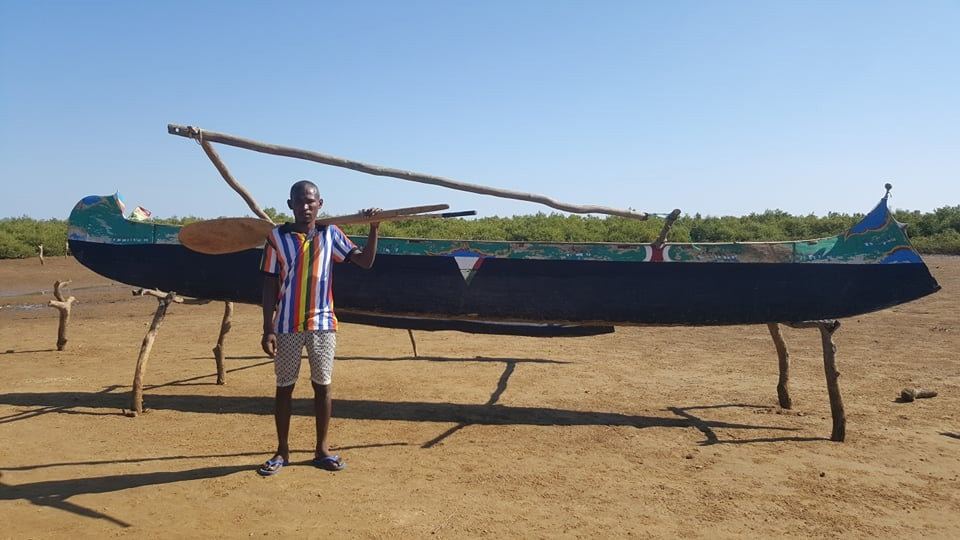
A restored ecosystem translates into better livelihoods for fishermen. Photo courtesy of Jonathan Randrianary ©
Coral bleaching occurs as a direct result of climate change, when elevated temperatures cause corals to expel the symbiotic algae they rely on for food and coloration. Without these algae, corals lose their vibrant colors and become more vulnerable to stressors.
Coral bleaching has cascading effects on fish populations and fishermen's livelihoods. Coral reefs provide vital habitats for a diverse array of fish species, offering shelter, breeding grounds, and a source of food. When coral reefs suffer from bleaching, fish populations dwindle due to loss of habitat and decreased food availability. This not only threatens the biodiversity of marine ecosystems but also undermines the livelihoods of fishermen like Patrice, who rely on healthy fish populations for sustenance and income.
Furthermore, reduced fish stocks disrupt coastal economies, impacting communities that heavily depend on fishing for jobs and resources. This can lead to increased poverty and food insecurity, particularly in large parts of Madagascar, where fishing is a primary source of income. Climate change-induced coral bleaching thus creates a damaging feedback loop, harming both marine ecosystems and the socioeconomic stability of coastal communities, highlighting the urgent need for global climate action and marine ecosystem restoration.
The Toliara reef complex, one of the longest reefs in the world, hasn’t been spared of coral bleaching. Thankfully, the people of Madagascar aren’t just capitulating to coral degradation without a fight.
Fishes Banking Enterprise has deployed the Fishes Banking ecotechnology to restore degraded corals in Toliara.
Faustinato Behivoke is an oceanographer who runs this enterprise. He says that reef restoration has immense benefits, “reef restoration using the Fishes Banking technique helps to attract the marine biodiversity associated on the reef.”
In essence, oceanographers from Fishes Banking Enterprise are creating artificial corals and planting them into the ocean so that they can provide optimal ecosystem services to marine life, especially as breeding ground for fish. They make these artificial reefs using simple materials like cement and coral rubble. Madagascar’s Ministry of Fisheries and the Blue Economy is a reliable partner in the project. Additional complementary partnership has come from the Second South West Indian Ocean Fisheries Governance and Shared Growth Project (SWIOFish2).
In 2022, the Fishes Banking ecotechnology project received a shot in the arm through a powerful partnership with the United Nations Environment Programme (UNEP) and the International Labour Organisation (ILO). The reef restoration work was expanded to include capacity building of fishing communities in numerous villages including Sarodrano, Ankilibe, Ankiembe, Tsingoritelo, Beravy, Ambalaboy, Amboaboake, Betsibaroky, Ambolomailaka, Andrevo and Fitsitike.
Fishermen in these communities are custodians of critical indigenous knowledge on the marine ecosystem. The ILO-UNEP Project coopted them into sustained restoration of the Toliara Reef System.
This restoration is in sync with the Pan-African Action Agenda on Ecosystem Restoration for Increased Resilience, which has provided a framework for harmonized and coordinated action on ecosystem restoration across Africa.

The power of ecosystem restoration. Photo courtesy of Fishes Banking Enterprise ©
The coastal area in Madagascar’s southwest region is a big deal. Its home to the Grand Recif de Toliara, which is the third largest reef system in the world. It extends from just north of Toliara town to the St. Augustine village. It comprises barrier reefs, fringing reefs and extensive shallow lagoons. It also hosts extensive mangrove systems and the Saint Augustine Submarine Canyon. Thanks to this canyon, deep water habitat can be found close to the coast, leading to an abundance of typically deep-water species like Risso’s dolphins, short-finned pilot whales and offshore common bottlenose dolphin.
Furthermore, Toliara reef System is a breeding area for humpback whales and a migratory area for Antarctic blue whales, pygmy blue whales; fin whales and antarctic minke whales. Unsurprisingly, this region is an active breeding habitat for humpback whales. It hosts the highest diversity of cetacean species documented anywhere in Madagascar. Amongst these cetaceans are endangered blue whales.
Toliara corals are so rich in marine life that they are home to a 400-million-year-old species of fish known as a coelacanth. This fish inhabited the ocean when dinosaurs were still roaming the earth. That’s why it’s known as the “living fossil” fish. According to a study published in the Current Biology journal, it can outlive most humans by living up to 100 years. While male coelacanths reach sexual mature at 40, females don’t become sexually mature until their late 50s. Their pregnancy lasts for five years.
In addition to this ancient-modern fish, there are over 6,000 different marine species in Toliara Reef System. All these species are part of the spectacular marine tapestry that includes at least thirteen species of sharks, four species of marine turtles, and eleven species of cetaceans. Indeed, the coelacanth is in great company!
A central part of this great company are the Vezo people that inhabit Toliara’s coastal area. They have been fishing for centuries and are well versed with the Ocean’s ways.
Embedded in their cultural heritage and livelihoods, the Vezo's deep understanding of marine ecosystems, sustainable fishing practices, and local biodiversity plays a pivotal role in the restoration of Madagascar's marine ecosystem.
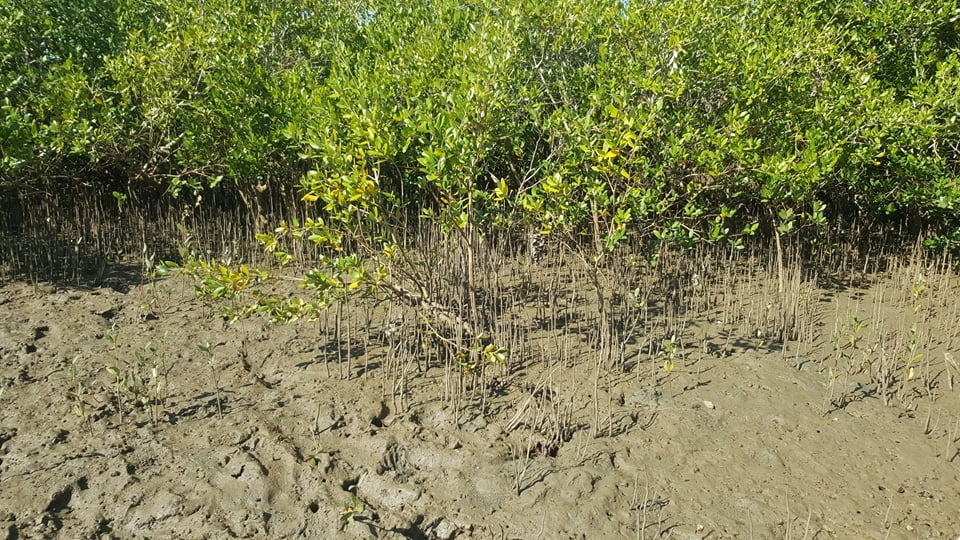
Young mangrove trees in Toliara. Photo courtesy of Jonathan Randrianary ©
At a national level, Madagascar’s Malagasy people are descended from Austronesian settlers and Bantu migrants from mainland East Africa. According to a study published in Nature Journal, Madagascar derives 66.3% of its genetic makeup from Africa. As testament to Madagascar’s Austronesian heritage, the Malagasy language’s closest relative is the Maanyan language, spoken in the southern part of Borneo Island in Indonesia. The American Journal of Human Genetics reports that this Indonesian heritage stems from a substantial migration from southeast Asia between 1,500 and 2,000 years ago.
Madagascar’s multi-faceted cultural can be seen in Toliara, home to 400,000 inhabitants and nearly half of Madagascar’s traditional fishers. Since 1950, Madagascar’s population has grown seven-fold from four million to almost thirty million in 2020. This has resulted in undue human pressure on the marine ecosystem, especially because fishing and aquaculture support almost 1.5 million people in Madagascar.
Considering that fishery supports 7 percent of Madagascar’s GDP, any adverse impact on fishery will affect even more people than the 1.5 million who work directly in the sector.
Against this backdrop the ILO-UNEP ‘Ecosystem Restoration in Madagascar’ project is quite critical.
This project provided financial and technical support for the Fishes Banking ecotechnology restoration work in the Bay of Toliara and the Bay of Ranobe.
Numerous villages in these two bays were earmarked for coral restoration. In order to ensure full community ownership, restoration sites were chosen in consultation with the communities, taking into consideration the prevailing social and ecological issues.
To support the recovery process, coral nurseries were established under the Fishes Banking Entreprise leadership. Local community members, trained in coral propagation techniques, played a crucial role in maintaining these nurseries. They carefully collected coral fragments from healthy reefs and cultivated them in underwater structures, providing a conducive environment for their growth.
As the corals in the nurseries thrived, the next step was coral transplantation. Carefully selected coral colonies from the nurseries were transplanted onto degraded reef areas, helping to rebuild the damaged reef structures. This process required meticulous planning and coordination between scientists and community members to ensure the successful integration of transplanted corals into the existing ecosystem.
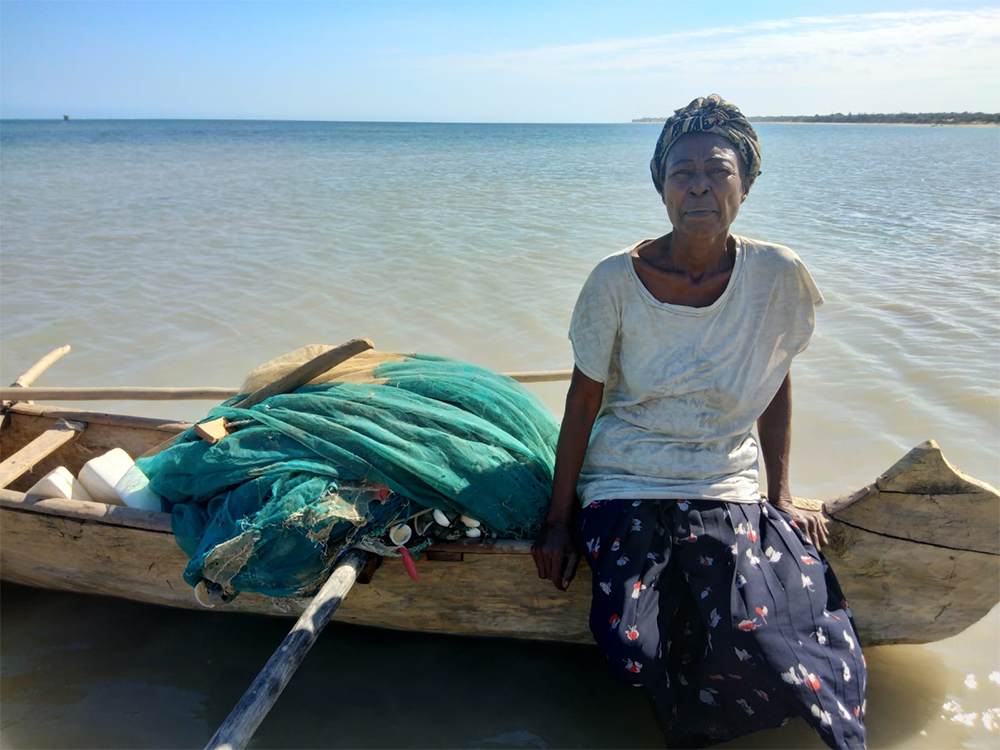
Women are the unsung blue economy heroes. Photo courtesy of Marie Christina Kolo ©
To monitor the progress of the restoration efforts, comprehensive reef surveys were conducted regularly. Scientists and trained community members conducted underwater assessments to measure coral cover, biodiversity, and overall reef health. These monitoring activities provided valuable data to assess the effectiveness of the restoration strategies and make necessary adjustments.
Alongside reef restoration, community engagement and education played a pivotal role in sustaining the conservation efforts. Awareness campaigns were conducted to educate local communities about the significance of coral reefs and the need for their protection. This outreach included interactive workshops, educational materials, and capacity-building programs aimed at fostering a sense of stewardship among community members.
Over the years, the reef restoration initiatives in the Toliara region have yielded positive results. Coral cover has increased, and the abundance of marine species has shown signs of recovery.
Indeed, the Fishes Banking ecotechnology has resulted the restoration of reef habitats and revamped marine life. Consequently, a staggering 102 fish species from inner and outer reef slopes were inventoried. Clearly, the artificial reef constructed through the Fishes Banking ecotechnology provided a home for fish to breed and reproduce.
However, challenges persist. Rising sea temperatures and coral bleaching events continue to pose threats to restored reefs. Continued monitoring, adaptive management strategies, and the involvement of local communities remain essential to ensure the long-term success of the reef restoration.
The reef restoration in the Toliara region exemplifies the power of effective collaboration between scientists, communities, ILO, UNEP and government agencies. The Fishes Banking Entreprise from Madagascar is the fulcrum of this successful collaborative effort, proving that locally led initiatives are truly sustainable.
By recognizing the value of coral reefs and embracing sustainable management practices, this region has taken significant steps towards the conservation and restoration of its invaluable marine ecosystems.
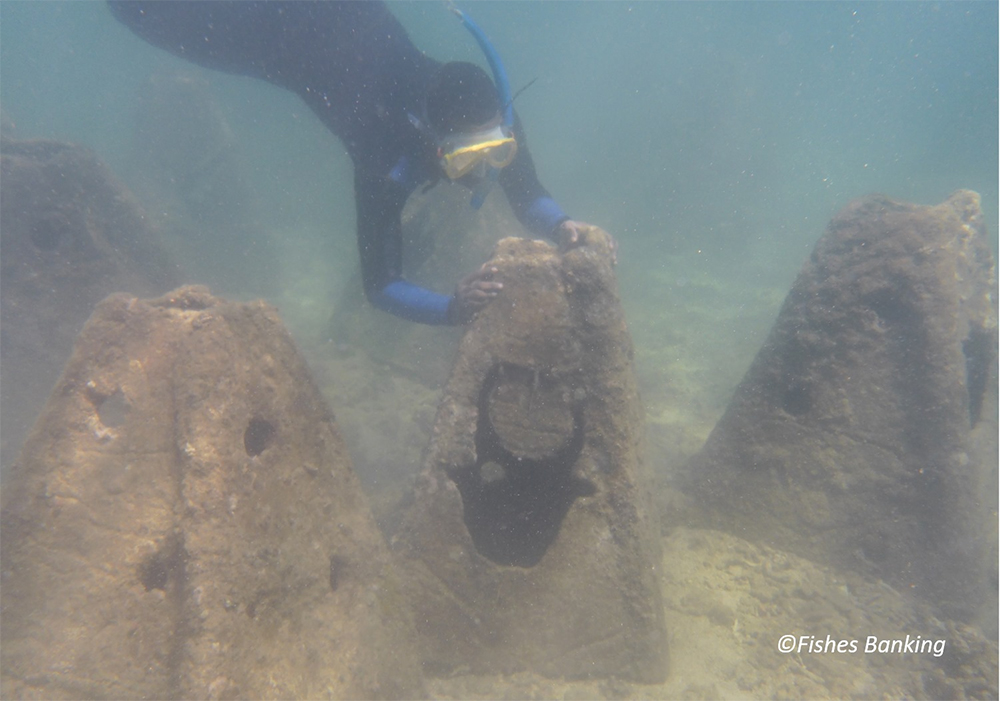
Entrenching artificial corals into the ocean. Photo courtesy of Fishes Banking Enterprise ©
Africa Eco Voices from Madagascar
Marie Christina Kolo
Jonathan Randrianary
7 Citizen Journalists from Atsimo-Andrefana
This article can be freely republished in both online and offline publications.

